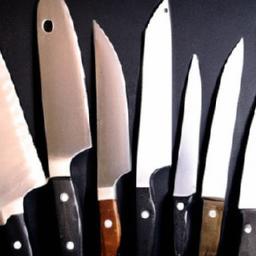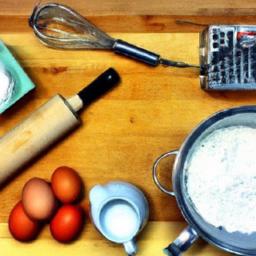Essential Kitchen Knives Every Aspiring Gourmet Needs
As you embark on your culinary journey, you’ll find yourself gradually accumulating a variety of knives, each designed for specific tasks in the kitchen. Even seasoned chefs often discover new knife styles and innovations they can’t resist adding to their collection.
However, before expanding your arsenal, it’s crucial to focus on assembling a fundamental set of kitchen knives that will reliably support your cooking ventures.
Building Your Foundation: Must-Have Kitchen Knives and Tools
Below is a carefully curated list of indispensable knives and sharpening accessories that form the cornerstone of any well-equipped kitchen.
Chef’s Knife (French Knife)
This versatile knife serves a multitude of purposes including chopping, slicing, and mincing. Typically measuring between 8 and 14 inches, its wide blade tapers elegantly towards a pointed tip, making it ideal for precision cutting. If you were to invest in just one high-quality kitchen knife, the chef’s knife would be the top recommendation. Leading brands such as Wüsthof are renowned for their durability and superior craftsmanship, favored by professionals worldwide.
Utility Knife
With a blade length typically ranging from 6 to 8 inches, the utility knife bridges the gap between the chef’s knife and smaller blades. It excels at slicing fruits, vegetables, and carving poultry, featuring a narrower profile compared to the chef’s knife for greater maneuverability.
Boning Knife
Designed specifically for detaching meat from bones, the boning knife features a slender blade usually between 5 and 7 inches. Depending on preference, blades can be rigid or flexible, offering versatility in preparing different cuts of meat and poultry.
Paring Knife
This small yet essential knife, featuring a 2 to 4 inch blade, is perfectly suited for intricate work such as peeling, trimming, and segmenting fruits and vegetables. Its compact size gives you precise control for delicate cuts.
Cleaver
Featuring a large, hefty rectangular blade, the cleaver is an indispensable tool for tasks requiring power, such as chopping through bones and thick cuts of meat. Its robust construction makes it a staple for butchery and heavy-duty kitchen work.
Slicing Knife
Equipped with a long, slender blade, slicing knives are ideal for carving cooked meats with precision. Their tips can be pointed or rounded and blades may be flexible or firm depending on the use. Variations with serrated blades excel at slicing through bread and pastries without crushing them.
Butcher Knife
Often referred to as a scimitar, this knife is distinguished by a rigid, curved blade that angles upward around 25 degrees at the tip. It is expertly crafted for fabricating raw meat, offering both strength and precision.
Oyster and Clam Knives
These specialized knives are designed for opening bivalve shellfish safely and efficiently. The oyster knife features a blunt tip to avoid damaging the delicate interior, while the clam knife incorporates a sharp edge, providing extra leverage for tougher shells.
Maintaining Your Knives: Essentials for Sharpness
Sharpening Stones (Whetstones)
To keep your blades performing at their best, sharpening stones are indispensable. These whetstones come in varieties from coarse to fine grits, allowing you to restore dull edges methodically. Remember, dull knives don’t just impair your cooking experience; they also pose significant safety risks.
Honing Steel
The honing steel is a slightly abrasive rod that realigns the edge of your knife between sharpening sessions. Regular use extends the sharpness and longevity of your blades.
In Summary: Curate Your Core Kitchen Knife Collection Thoughtfully
With an understanding of these fundamental kitchen knife types, you are better equipped to determine which knives will best suit your cooking style and kitchen needs. Investing in quality brands and maintaining your knives meticulously will ensure your culinary tools remain reliable partners in your gourmet pursuits.












